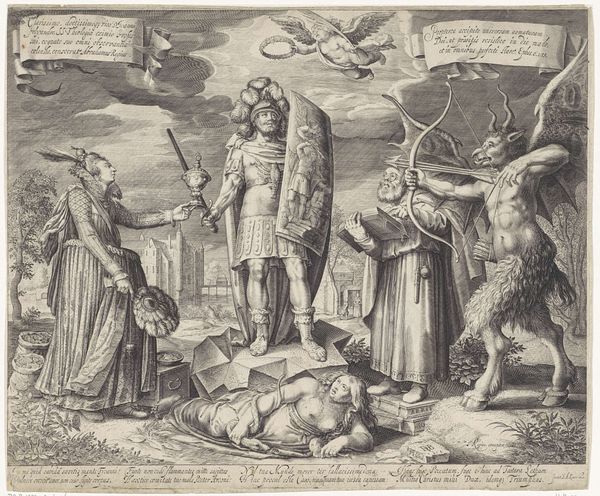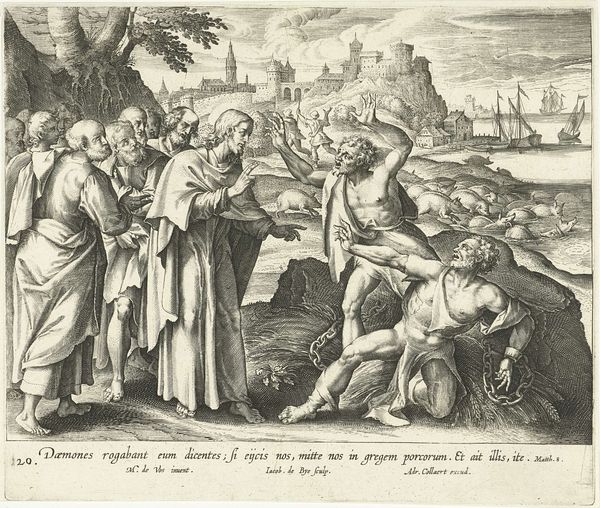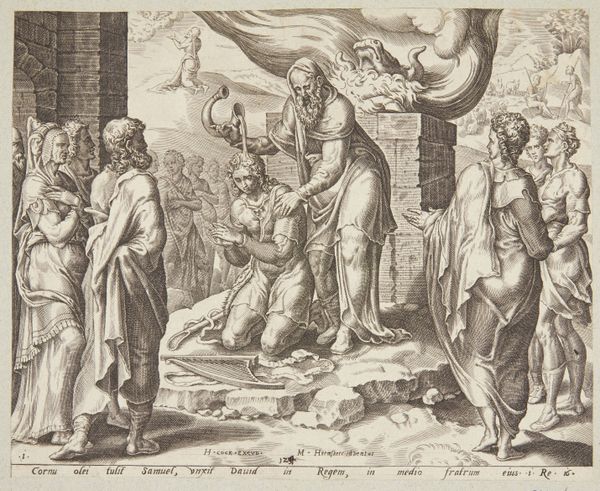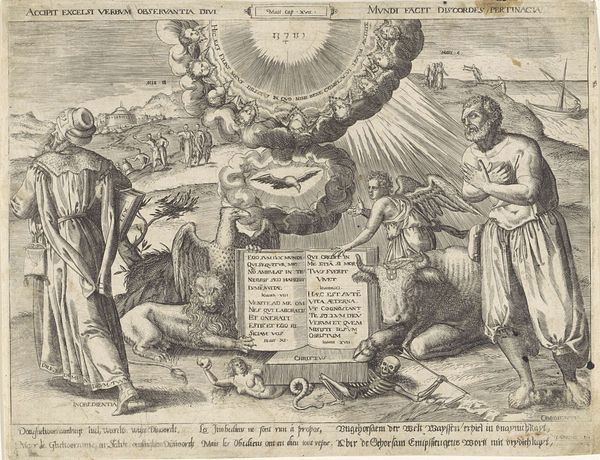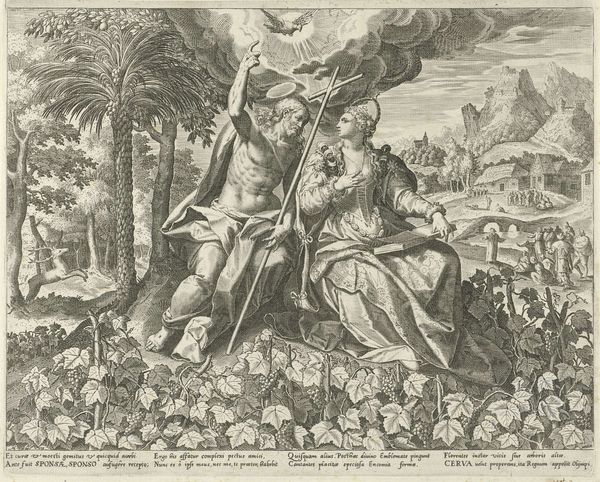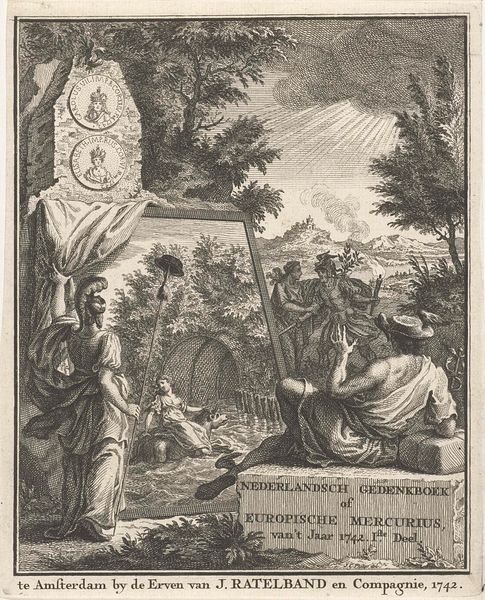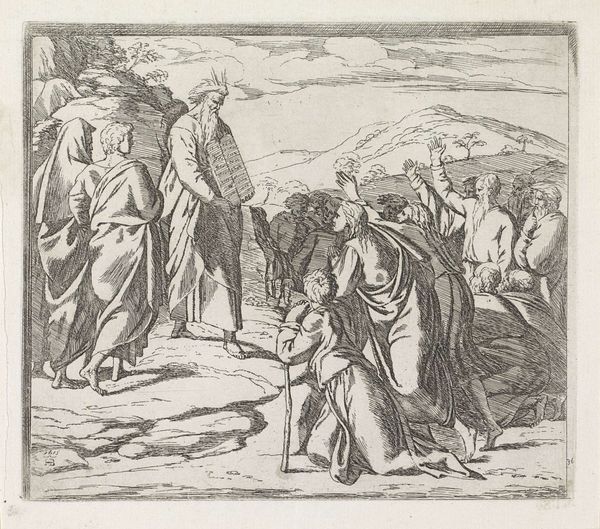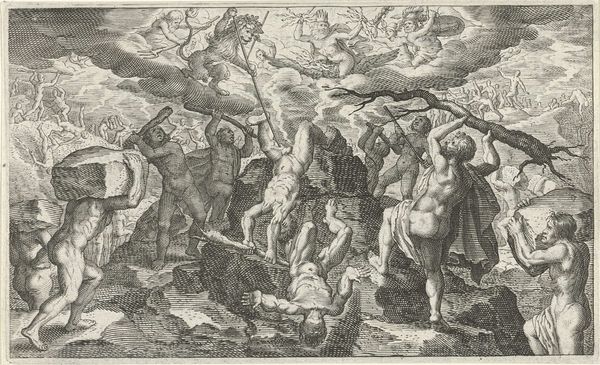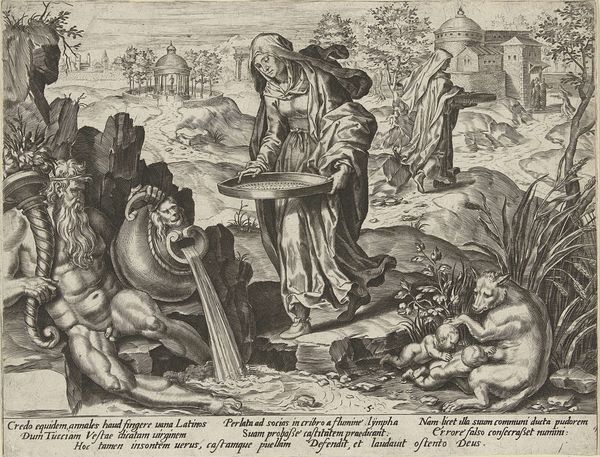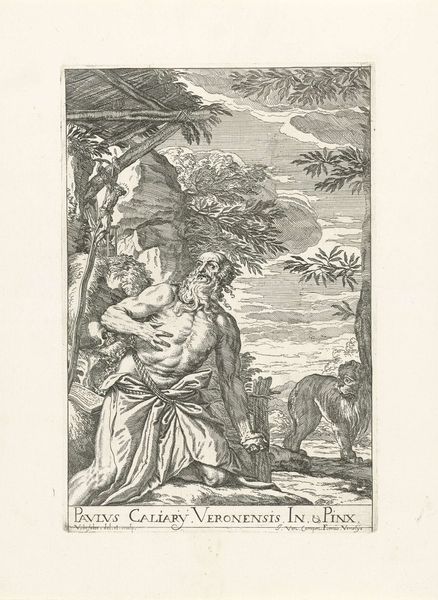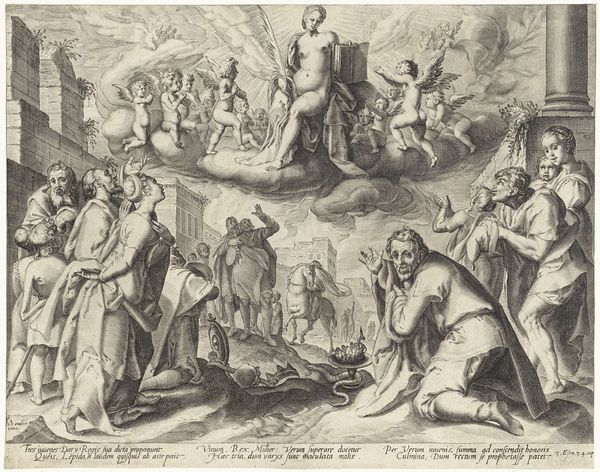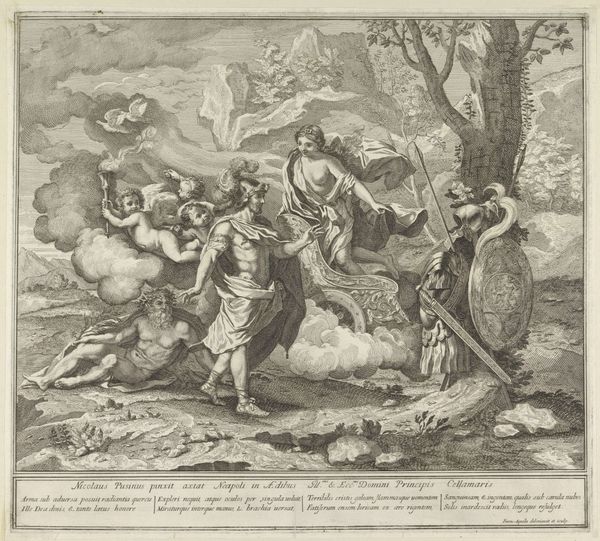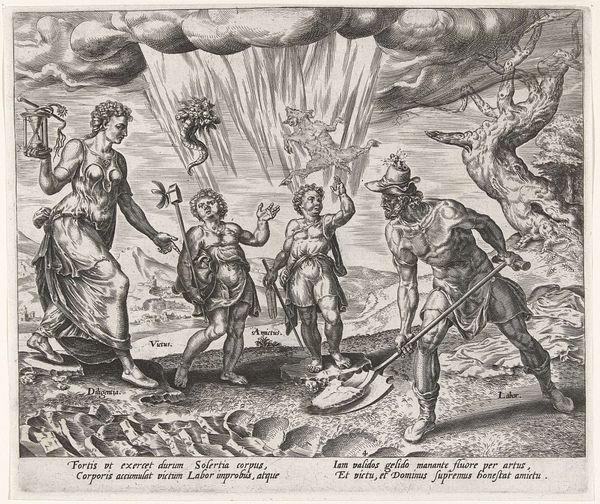
print, intaglio, engraving
#
allegory
#
narrative-art
# print
#
intaglio
#
old engraving style
#
mannerism
#
figuration
#
history-painting
#
engraving
Dimensions: height 200 mm, width 223 mm
Copyright: Rijks Museum: Open Domain
Curator: This engraving, “Allegory over Boetedoening en Berouw” – or, “Allegory of Penance and Repentance”—dates from between 1547 and 1612, and is attributed to Philips Galle. It's an intaglio print, currently held here at the Rijksmuseum. Editor: It's intense. Very dramatic! A kind of stage set for morality... look how the figures are positioned, the half-human monster, the flowing drapery, the sky—a story unfolds here, of sorts, in stark black and white. What is your first reaction to the work? Curator: My immediate thought drifts to the historical context. Consider how religious upheaval shaped artistic production; this piece emerges from a time where the politics of sin and redemption were being publicly debated, very fraught issues influencing daily life. Editor: Absolutely. The artist is wading into those debates, visualizing the concepts. We see Poenitentia, Repentance, leading us towards Divine Mercy… is that how you read it? With Precatum, or Sin, trying to pull Repentance back? There's such a tension here. Curator: Precisely, and observe how Philips Galle uses the print medium itself. This artwork has texts above and below the central image that attempt to direct us in understanding this tableau. And the lines, so sharp, so clean—the engraving technique lends a sense of unwavering certainty to these allegorical figures, giving moral guidance. Editor: Almost like an instruction manual for the soul? But even with all that moralizing I also feel this incredible artistic struggle. Sin is depicted so muscular, while Repentance has a certain reluctant grace. It makes you wonder about the artist’s own… doubts. Perhaps what's interesting about the image is its ability to visualize what we can't see; repentance, faith, salvation. Curator: Yes, Galle presents these inner states outwardly. It makes me reflect on the ways religious art attempted to govern emotion. This wasn't just about seeing; it was about feeling properly, feeling contrition and devotion, publicly. Editor: An artistic snapshot of the soul wrestling with itself—it’s pretty powerful to witness it centuries later. I almost feel transformed by the power of suggestion here. Curator: That lingering presence speaks volumes about how effective such imagery once was, and still is, in prompting us to think about what is most important.
Comments
No comments
Be the first to comment and join the conversation on the ultimate creative platform.

